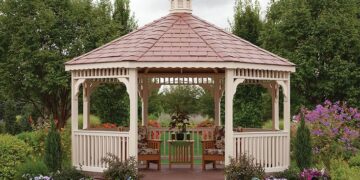Are you considering building a new home, reclaiming it as your own, and using the opportunity to construct the perfect space for your needs? After all, home is where you connect with your family and unwind following a hard day at work. Now that you’ve chosen to build your sanctuary, we’ve compiled a list of ten critical factors to consider when constructing a new home. Let us begin. Also, you can prefer the quality Door locks that make your dream home more attractive.
1. Ready-Made Or Custom-Made Design
When you decide to make a house, one of the most exciting parts is designing your new dream kitchen and the appliances such as cabinet hardware, countertops, kitchen sink, and faucet – there are many options for each of these selections. Installing a 24-inch stainless steel sink is the right choice as it retains its shine for years and better quality sinks do not dent easily. The next decision that you will face is whether to go with a pre-designed place or something unique with an original design. If you look at plans and construction photographs on sites such as Getty images, you will get a sense of the process and the finished product.
You can seek professional advice from individuals who have recently purchased a new home, custom-designed and prebuilt. Additionally, you should consult message boards and forums for guidance, tips, and information that will assist you in determining the type of home to purchase.
Criterion is one of the online companies that will collaborate with your local architect to address unique specifications for your home’s space, planning, and appearance.
For unique designs, plots of land with an unusual shape or size will necessitate considerable attention. To build your dream home, you’ll need to work with an architect who understands your needs and pays attention to every artistic detail. While an original design may be more expensive than a prebuilt design, your home will be unique and a space in which you can truly relax and entertain, and most importantly – call home.
2. Recognize Your Individual Needs
Creating a checklist of ideas and determining essential must-haves for every new project is critical to ensuring that your home feels like home. Communicate your thoughts and solicit suggestions while you are consulting with an architect. For example, the size of the house is essential because you’ll want to account for the number of people who will live there.
Everybody desires and requires their room. Consult with the architect to prevent costly errors such as adding unnecessary rooms that increase maintaining and building the house and concrete form for sale. If you work from home, consider adding the executive study to help you save money on business expenses. Additionally, locate it in a peaceful area that will encourage new ideas and strategies.
Are you planning to host friends and family for long comfortable weekends? Consider adding guest bedrooms to host them easily. Utilities such as the laundry room, pantry, basements, or sunrooms for additional entertaining space should also be considered.
3. Space Planning
When designing your office, there are a few fundamental principles to keep in mind. First, your home’s living room and dining room should be located on the south or southwest side. Second, bear in mind that you’ll be spending a lot of time in these spaces, so you’ll want plenty of natural light. Generally, the most potent sun positions are to the south and southwest. These are details that general contractors are familiar with and will be able to get the job done to your requirements.
Increase the size of the windows in these areas of your home to maximize solar energy, which will fuel the interior and create room for the garden. Consider this: Depending on the location of your house, you can theoretically save up to 20% by using solar energy.
Additionally, consider dividing your home into zones. For example, the day zone, or areas that are typically occupied during the day, can include a living room, dining room, kitchen, office, guest bedrooms, and bathrooms. Separate these areas from the night zone, master bedrooms, adjoining baths, and walk-in closets in your house.
Children’s bedrooms, family bathrooms, and children’s play areas can all be considered part of the home’s night zone. A home gym and leisure areas are also included in the design as modern conveniences. Finally, there should be accessible communication zones to maintain a sense of community among household members.
4. Obtaining the Required Materials
Choosing the appropriate materials is a critical aspect of construction. A good home should be durable, robust, and well-constructed search for concrete for sale and plywood for sale. Consider the many possibilities available in construction technology symons forms. You can choose from ceramics, concrete forms for sale, wood (including wooden beams to enhance the home’s look), or more costly materials. Others prefer to avail masonry tuckpointing in Washington DC to improve the aesthetics of their home exterior.
Additionally, optimal energy efficiency can be achieved by selecting the appropriate building materials. In the end, and environmentally friendly home would save you time and money because it would use less energy to heat and cool, resulting in lower energy bills. Match these materials by choosing the best electricity rates and provider that suit your new house needs.
Mineral fur, foamed polystyrene, and polyurethane foam are all examples of insulating materials. Therefore, it is critical to consider the quantity of material used and selecting the most appropriate materials in a given category.
The materials used in the design of your home can impact the acoustics of the structure. Staying in noisy environments can harm your health, which is why it is essential to take extra precautions by sound-proofing your home. You do not want to be disturbed in your home by echos.
Tip: Proper insulation is very important to make your dream home energy efficient. There are so many places where energy can be wasted. Here are the following percentages of where heat leaves from your home: 25% – from Windows & doors, 25% – From roof, 35% – Walls 15% – Floor. If the households qualify for free insulation grants then it will help to save the cost of insulation of the dream home.
5. Automation And Lighting
The proper lighting installation is critical to add a special touch and a sense of cozy to your home. Effectively illuminated factors of the house bring out the architecture’s elegance and charm, creating a desirable atmosphere. Likewise, lighting makes a unique atmosphere in a garden, allowing you to appreciate and enjoy the landscaping after dark. To help keep your home secure, illuminated driveways and garages are critical.
When designing a modern home, intelligent home components should be considered. Current building management systems aid in energy efficiency by monitoring the central heating system, air conditioning, radiant floor heating, sprinklers, blinds, and even lighting and alarm systems. These incredible technological advances have allowed people to monitor their homes remotely, providing an enhanced sense of security and a homey feeling – even while they are abroad.
Utilizing photovoltaics to increase energy efficiency and independence from the power grid will help save the world while lowering or eliminating your utility bills. While this technology does entail an initial investment, it will undoubtedly pay for itself.
6. Create A Budget
Now that you’ve identified your needs and desires, it’s time to discuss money. First, utilize the checklist to calculate the expense of each object and then determine whether you can afford it. Remember to factor in property taxes, any necessary down payments, and labor and material costs. When taking mortgage, first make sure to check the Best mortgage rates so you can take the right decision.
If you’re working with a small budget, this is an excellent place to establish goals and add items to your wish list. Alternatively, you should discuss a construction loan with your bank to ensure that you cover all bases. However, a construction mortgage does not cover the following expenses:
- Driveway Furnishings
- Your initial charge
- Internet or some other media wiring
- Window coverings Landscaping
- Any update that is considered excessive
We suggest getting three big construction budgets based on our experience. There are the following:
A). Your Construction Budget
This budget usually includes the down payment, the cost of the building, and the cost of the construction mortgage. Bear in mind that the average cost of constructing a home is between $100 and $300, depending on the level of customization needed. Your architect will be able to guide you on the exact cost.
B). The Budget for Furnishings
Naturally, after constructing a home, you’ll want to ensure that the furnishings complement the new design, feel, and style. These include sofas, window treatments, and decorative products. Costs will quickly accumulate, so budget accordingly.
C). Budget Completion
After your contractor has worked their magic, you will be left with a lot full of dirt that will not fit in your dream home. You’ll want to focus on the driveway, landscaping, and fencing, and you’ll probably want to install a deck as well. Many of these are monetary investments.
7. Consult An Architect
This is perhaps the most critical individual in the construction process, as they bring it to life. First, you must discuss the project with them to create sketches, floor plans, and cost estimates. Additionally, they will assist you with contract negotiations while recruiting a contractor, electrician, plumber, and the rest of the team. Finally, they will inspect the construction site and collaborate with the homebuilder to assess the product cost and provide advice on fixtures and finishes. Consider the architect to be the project manager.









